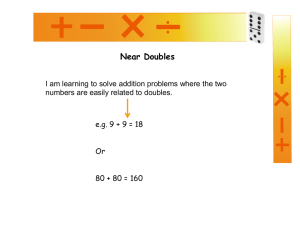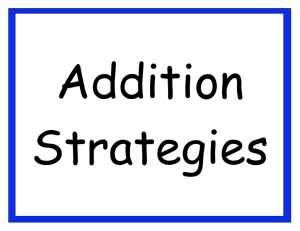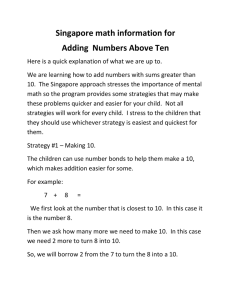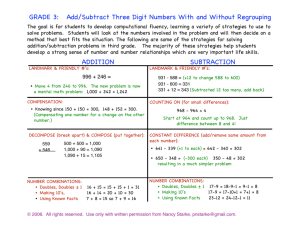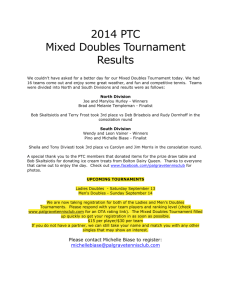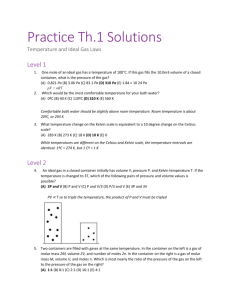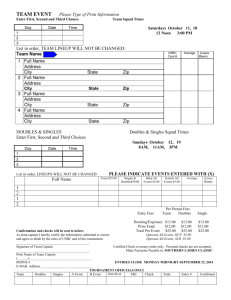“Subtracting Doubles, Near Doubles, Near Neighbours” For a
advertisement
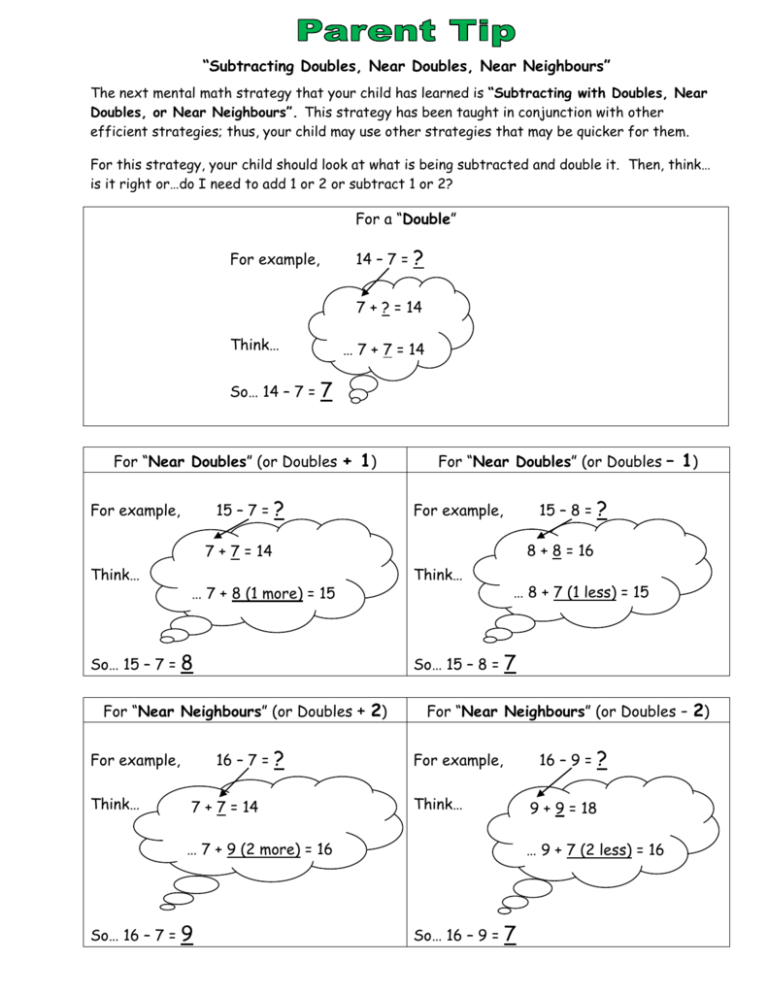
“Subtracting Doubles, Near Doubles, Near Neighbours” The next mental math strategy that your child has learned is “Subtracting with Doubles, Near Doubles, or Near Neighbours”. This strategy has been taught in conjunction with other efficient strategies; thus, your child may use other strategies that may be quicker for them. For this strategy, your child should look at what is being subtracted and double it. Then, think… is it right or…do I need to add 1 or 2 or subtract 1 or 2? For a “Double” 14 – 7 = ? For example, 7 + ? = 14 Think… So… 14 – 7 = … 7 + 7 = 14 7 For “Near Doubles” (or Doubles + 1) For example, 15 – 7 = ? For “Near Doubles” (or Doubles – 1) For example, 15 – 8 = 8 + 8 = 16 7 + 7 = 14 Think… So… 15 – 7 = … 7 + 8 (1 more) = 15 8 Think… Think… So… 15 – 8 = For “Near Neighbours” (or Doubles + 2) For example, 16 – 7 = ? = 14 7 +77+=714 7+ … 8 + 7 (1 less) = 15 7 For “Near Neighbours” (or Doubles - 2) For example, 16 – 9 = Think… 9 ? 99 ++ 99 ==18 18 ……99++77(2 (2less) less)==16 16 … 7 + 9 (2 more) = 16 So… 16 – 7 = ? So… 16 – 9 = 7 I have taught and reinforced this strategy at school. Please review these facts at home: “Subtracting Doubles” 2–1=1 4–2=2 6–3=3 8–4=4 10 – 5 = 5 12 – 6 = 6 14 – 7 = 7 16 – 8 = 8 18 – 9 = 9 20 – 10 = 10 “Subtracting Near Doubles” 3–1=2 5–2=3 7–3=4 9–4=5 11 – 5 = 6 13 – 6 = 7 15 – 7 = 8 17 – 8 = 9 19 – 9 = 10 21 – 10 = 11 3–2=1 5–3=2 7–4=3 9–5=4 11 – 6 = 5 13 – 7 = 6 15 – 8 = 7 17 – 9 = 8 19 – 10 = 9 21 – 11 = 10 “Subtracting Near Neighbours” 4–1=3 4–3=1 6–2=4 6-4=2 8–3=5 8-5=3 10 – 4 = 6 10 - 6 = 4 12 – 5 = 7 12 - 7 = 5 14 – 6 = 8 14 - 8 = 6 16 – 7 = 9 16 - 9 = 7 18 – 8 = 10 18 - 10 = 8 20 – 9 = 11 20 - 11 = 9
